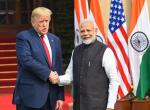While connectivity as a principle cannot be faulted with it is the geopolitical implications of such projects, for instance the China-Pakistan economic corridor that has raised concerns amongst India’s strategic and security establishment. Firstly, there is the question of infrastructure or for that matter any other developmental projects in an area which is considered disputed not only by India but also by Pakistan. China has been against Asian Development Bank funds being given to developmental projects in Arunachal Pradesh which it considers disputed; Beijing has also objected to Japanese funds being utilised for such projects in Arunachal Pradesh. Therefore, China in essence is following double standards.
Secondly, construction of multimodal corridors very near to India-POK Line of Actual Control and international border would provide improved access and connectivity to a number of Pakistan based terrorist groups operating against India. Development of roads, communication networks would enable the terrorists to set up more bases and expand their activities. Evidently, such improved connectivity would lead to increased infiltration of undesirable elements across the LOC and IB to India. Naturally, such a state of affairs would have adverse impact on India-Pakistan and India-China bilateral relationship. This would not be conducive to peace and stability in the region.
The presence of PLA troops, from Construction Corps in the POK for maintenance and construction activity also has military implications. The Indian Defence Forces have been envisioning the possibilities of having to fight a two-front war given the nature of cooperation between China and Pakistan and presence of PLA soldiers in POK indicates that this could well come about. Thus, such activities would only add to India’s resolve to continue strengthening its deterrence capabilities against such a likely scenario. China’s activities in the disputed areas would also have adverse implications for stability in the region.
At the strategic level this corridor is perceived as realization of China’s long term strategic objective of gaining access to the Indian Ocean through building a Strategic Land Bridge or Continental bridge from Xinjiang to Gwadar. The other strategic land bridge for connecting to Indian Ocean is through Myanmar. Some of the arguments like China’s need for avoiding the Malacca Dilemma are well known.
Further, development of Gwadar port and its operation by China needs to be seen as part of the broader Chinese Grand Maritime Strategy which has been under way for some years. Though Gwadar would be an economic hub mainly catering to commercial interests that would be mutually useful to Pakistan and China yet the much talked about commercial activity has not taken off as yet. The development of roads and communication networks to the hinterland has also not taken place in any meaningful way.
According to The Dawn, a Pakistan there is a controversy about the route of the road links between the deep-water port of Gwadar and the mountain border crossing of Khunjerab. The original plan was to link Quetta and then parts of Khyber Pakhtunkhwa (KP) which has been changed to connect to existing road network in Sindh and Punjab thus raising concerns of Baluchistan and KP provinces. Evidently, neither China nor Pakistan wants to invest in developing new routes as the costs would be heavy. It is also surprising that the depiction of the route is missing from the website of Pakistan’s Planning Commission. Similarly, the website of Pakistan National Highway Authority does not explain the route or the road projects connected with the China- Pakistan economic corridor. In first week of February the Senators from Baluchistan and Khyber Pakhtunkhwa walked out of the National Assembly proceedings during the discussions because the government needed to show transparency on the route and nature of deal with the Chinese.
According to Ayesha Siddiqa, a well known Pakistani analyst the Chinese model for countries like Pakistan and Sri Lanka is to exploit their need for investment in infrastructure development. There are huge projects conceived, such as the new seaport near Colombo, as well as power plants and roads that make the country appear modern, but at an extremely high cost. Beijing has the kind of capital it can invest in such places where it is guaranteed higher returns. She opines that the relationship is based on a collusion of interests between the ruling elite of the recipient state and the government in China.
Nevertheless, the CPEC including the Gwadar port, over the long term, provides the potential to China to exercise its ever expanding military influence. The Chinese economic and military power has grown and along with its overall comprehensive naval power it has begun to look for securing its interests in the far flung areas extending from the Pacific to Indian Ocean Region and beyond even to the Mediterranean. Docking of Chinese submarines in Sri Lanka also reflected PLA Navy’s increasing presence in the Indian Ocean region.
There is also the geopolitical reality of unfolding Afghanistan scenario. Once the US forces have extricated their resources and equipment from Afghanistan, Pakistan would like the American influence to diminish over a period of time, this in a sense will counter balance American maritime influence something which both China and Pakistan would welcome.
However, besides the difficulties of terrain and weather in the Northern mountainous areas for construction and maintenance of roads, pipelines and hydro projects the internal security situation would also present many challenges to realization of the economic corridor. Gilgit and Baltistan through which the corridor will pass have groups that object to construction of such projects because of several reasons.
The people of Gilgit-Baltistan have been demanding full legislative powers for the region. Pakistan has been rejecting the demand as according to Islamabad it would stand in contradiction to the international agreement regarding the disputed territory. The Gilgit-Baltistan United Front is against the accords signed with China; their argument is that Gilgit-Baltistan is a disputed territory and, therefore, any accord without the consent of the indigenous people cannot be accepted. Their view is that Pakistan’s Nawaz Sharif is not a representative of Gilgit-Baltistan and hence he has no right to impose his economic interests onto the region. Gilgit-Baltistan has also initiated the movement against the inclusion of the anti-terrorism law that is against the mandate of the United Nations Commission on India and Pakistan (UNCIP) and consider it illegal and against the indigenous people.
Further, over the years Pakistan has also been working on changing the demographic profile of largely Shia populated Gilgit Baltistan by settling Sunni Muslims in the area. This has created tensions between the two Muslim sects thus creating more instability in the region. Recently, the frequency of attacks by Sunni extremist groups against the Shias has increased with concomitant impact on Gilgit-Baltistan.
Turbulence in Baluchistan, dominance of radicalized Pashtoons in Karachi which control most of the road transportation and expanding signature of terrorist outfits are some of the factors which would have negative impact on development activities. Many insurgent groups of Baluchistan have objected to development of Gwadar and exploitation of their natural resources by Pakistan’s central government. The insurgency has been acquiring some momentum of late.
The planned off shoots of the corridor to Afghanistan are also likely to be beset with the problems of instability and terrorism which show no sign of abating. Society in Pakistan has become so radicalized and extremist ideologies so rooted in the DNA of Pakistan that one wonders very much whether the current dispensation and their ways of working can bring Pakistan back from the abyss it is staring into.
On the other hand despite the grand announcement of investing US dollars 40 billion or so by China in Pakistan for various projects, Beijing would be very careful in sinking money in Pakistan. There is also a perspective that China is unlikely to gain much from Pakistan given the dysfunctional nature of the state. While Pakistan military might have promised China that it would be able to control the terrorist and extremist groups that might cause harm to China in Xinjiang it is also well understood that Pakistan has not been able to control such groups. Many strategists have surmised that Pakistan is more unstable than Afghanistan and most of the problems in Afghanistan are due to Pakistan’s interference and support to Afghan Taliban.
While some portions of CPEC may become a reality it is unlikely that project would be realized as envisioned in its original form. Meanwhile India needs to continue to oppose robustly China’s developmental and other activities in the disputed areas of POK. India’s also needs to strengthen its maritime presence in Indian Ocean region and take suitable countermeasures through a variety of means to neutralize the geostrategic implications of Gwadar port.
Published Date: 8th April 2015, Image Source: http://tribune.com.pk










Post new comment